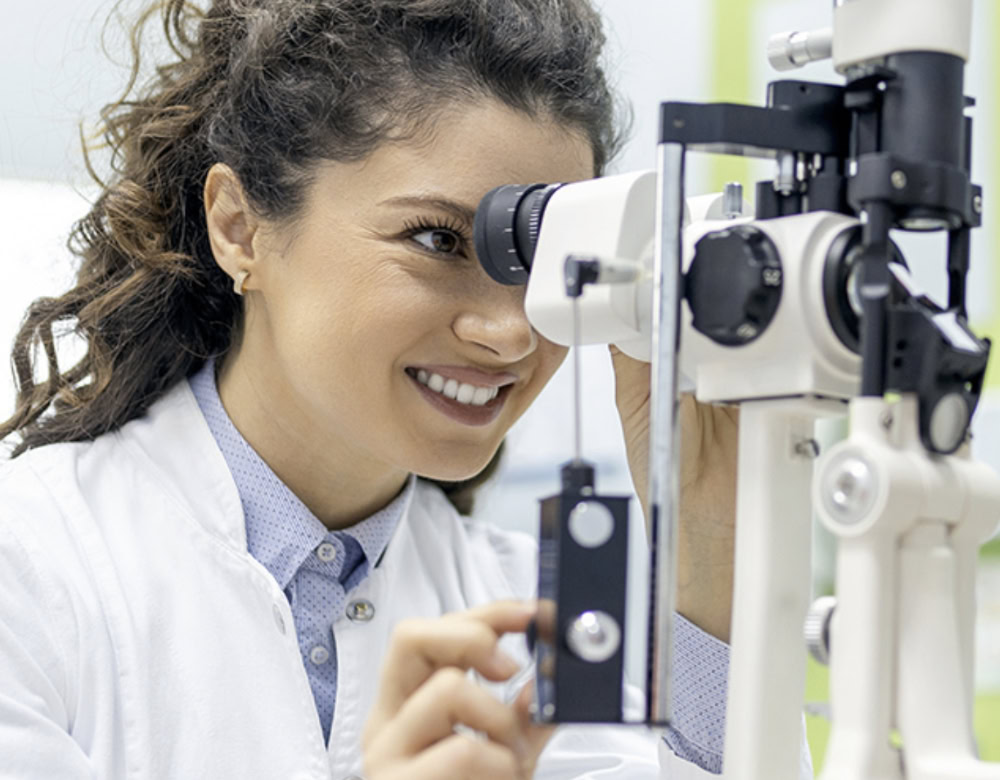Experts from the German Ophthalmological Society (DOG) warn: contact lens cases are bacteria traps!
At least 3.4 million people in Germany wear contact lenses. However, comfortable wearing should not hide the fact that the visual aids remain a foreign body in the eye, which increases the risk of sometimes serious corneal infections. Experts from the German Ophthalmological Society (DOG) pointed this out at their annual congress in Berlin.

Professor Gerd Geerling, MD, explained how contact lens wearers can best protect themselves from increasingly common pathogens such as fungi and amoebae at an online press conference for the DOG 2023 on September 21. Infectious pathogens, such as bacteria and viruses, exist on every healthy eye surface. "However, an intact tear film and a dense superficial cell layer of the cornea prevent germs from entering the eye," explains DOG expert Professor Dr. Gerd Geerling. "Anyone who uses contact lenses to correct visual defects - whether myopia, hyperopia or astigmatism - or scars, places the round adhesive shells on precisely this protective layer of tear film and cornea."
The Director of the Department of Ophthalmology at Düsseldorf University Hospital emphasizes: "Contact lenses therefore always represent a risky foreign body in the eye." This is because the adhesive shell changes the oxygen supply and moistening of the eye surface with tear film and can initially cause microscopic damage to the cornea. "As a rule, these injuries heal without any problems," says Geerling, "but they can also cause pain and be the entry point for infectious pathogens."
Soft contact lenses susceptible to rare infectious agents
Rare infectious pathogens such as amoebae and fungi are found alongside regular bacteria, particularly in wearers of soft contact lenses. "These pathogens are becoming increasingly common today - possibly also due to climatic changes in our latitudes - and can sometimes cause very serious infections of the cornea and the inside of the eye that require months of treatment with eye drops and tablets," explains Geerling. In particularly severe cases, a corneal transplant or, in the worst case, even the removal of an eye may be necessary.
Observe the rules of conduct
To avoid such infections, contact lens wearers should strictly adhere to the manufacturer's care instructions and follow a few rules of conduct. "Always wash your hands before coming into contact with the adhesive shells," advises Geerling. Dirt and germs collect on the contact lenses themselves over time. "That's why daily disinfection with the prescribed cleaning and storage liquid is extremely important," emphasizes the ophthalmologist. Geerling also advises manual cleaning: "To do this, place the contact lenses on the cleaned palm of your hand and gently rub a few drops of cleaning agent onto the lens with your fingertip, then rinse the lenses with saline solution." If a contact lens is damaged or dirty, dispose of it immediately.
Clean storage containers properly
However, bacteria can also multiply in the contact lens storage container. "They can form a biofilm there, a kind of mucus produced by the pathogen itself, a real bacterial trap," says Geerling. The important thing is: Never clean with tap water - neither containers nor contact lenses. "Tap water is not sterile, it contains microorganisms, metal particles, chlorine and other substances," explains Geerling. "If you use it to clean or store trays, you run the risk of germs sticking to the lens." It is best to rinse the container with the disinfectant solution and allow it to air dry. After three months, the container should be replaced with a new one.
Risk of infection even with daily disposable lenses
The risk of infection is even higher with daily disposable lenses that are thrown away and reinserted every day. "This is particularly true if they are worn for longer than recommended, for example continuously through the night," says Geerling. The expert advises against swimming with contact lenses in natural waters: "This reduces the risk of infection with acanthamoebae, which can cause serious corneal inflammation."
See an ophthalmologist if you have complaints
If allergic reactions, complaints such as reduced vision, secretion, redness or pain occur, an ophthalmologist should be consulted. "They will also decide whether the lenses can continue to be worn or whether contact lens withdrawal should be observed, for example in the case of drip treatment," says the DOG expert.








